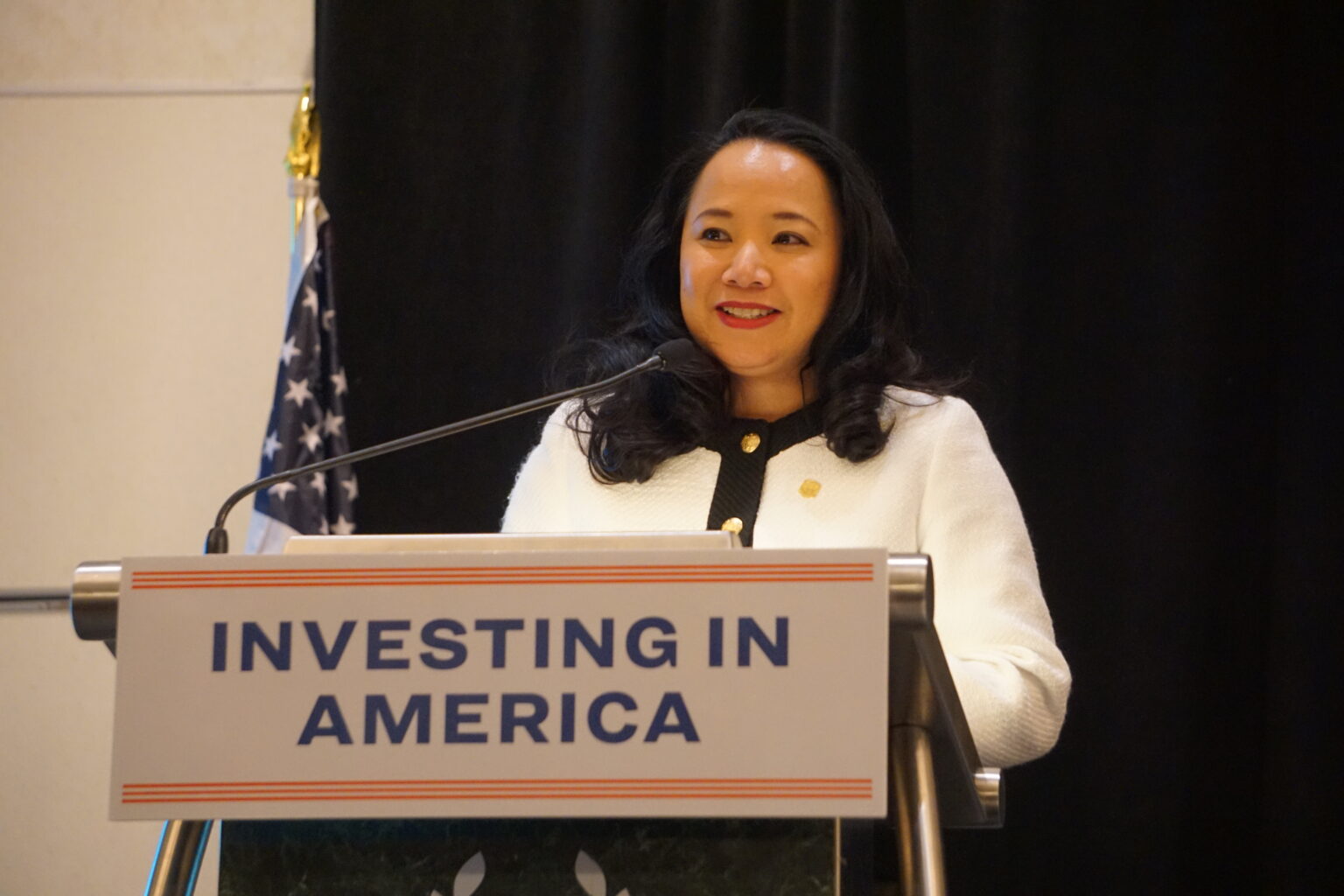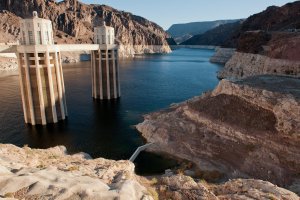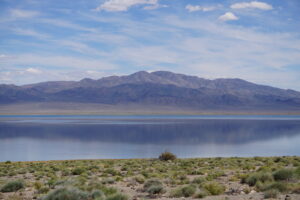6:04
News Story
CA agencies agree to conserve a combined 643,000 acre-feet of water in Lake Mead
Lake Mead is getting a massive boost in water this summer after several California water agencies agreed to conserve up to 643,000 acre-feet of water through 2025 under an agreement with the federal government, more than double Nevada’s total annual water allocation.
The U.S. Bureau of Reclamation, which manages the drought-stricken reservoir, announced the agreement Wednesday during a signing ceremony in Las Vegas.
California water agencies will receive a total of $295 million in compensation from the federal government as part of the agreement in order to fund projects for water conservation and water efficiency for the Colorado River System.
Under the agreement, the Coachella Valley Water District committed to saving up to 105,000 acre-feet of water in Lake Mead through 2025. A second water saving agreement with the Coachella Valley Water District is expected to be finalized in the coming weeks, according to federal officials.
Federal water managers also announced they reached an agreement with the Quechan Indian Tribe to save up to 39,000 acre-feet of water in the reservoir through 2025.
Later this week, water managers for the Palo Verde Irrigation District and Bard Water District will sign conservation agreements in cooperation with the Metropolitan Water District in Southern California, which supplies water to 19 million people in Los Angeles, San Diego and other southern counties.
“We all are aware of the risks the basin is facing and fully understand what the results of inaction could be. We’re seeing a change in hydrology, as well as the lowest water levels that we’ve ever seen,” said Bureau of Reclamation Commissioner Camille Calimlim Touton Wednesday.
The agreement is the latest in a series of commitments by Nevada, California, and Arizona to collectively reduce water use by at least 3 million acre-feet through the end of 2026, when the Colorado River’s current operating guidelines are set to expire.
Last week, the Imperial Irrigation District — the Colorado River’s largest water user — signed an agreement with the federal government to conserve about 100,000 acre-feet of water in 2023, enough to support upwards of 300,000 single family homes for a year.
Arizona recently pledged to conserve up to 348,680 acre-feet of water in Lake Mead in 2023, and up to 984,429 acre-feet through 2026, in exchange for hefty federal funds.
Water conservation agreements signed this year between the federal government, states, and tribes will conserve more than 1.5 million acre feet through 2026, including up to 984,429-acre feet of water in Lake Mead through 2026.
Those conservation efforts combined with a heavy snowpack last winter will keep water levels in Lake Mead and the greater Colorado River stable over the next three years, say federal water managers. In October, the U.S Department of the Interior announced that the chance of Lake Mead falling below critical levels through 2026 was reduced to four percent compared to last year.
Lake Mead water users have already conserved up to 348,680-acre feet of water in the reservoir this year— that’s more water than has been conserved in a single year over the past 30 years, said Calimlim Touton. As of December, Lake Mead is about 40 feet higher than it was projected to be at this time last year, according to the Bureau of Reclamation. Lake Powell in Arizona and Southern Utah rebound by 44 feet this year.
The agreements will be funded through the Inflation Reduction Act which was signed by President Joe Biden in 2022, and represents the largest climate investment in U.S. history.
“The Biden-Harris administration is using every tool and resource at our disposal to continue our sustained, collaborative progress in increasing water conservation across the West,” said Interior Secretary Deb Haaland in a statement Wednesday.
Nevada Democratic Rep. Dina Titus, a member of the House Colorado River Caucus, applauded yesterday’s announcement.
“This is not only important for the continued viability and water infrastructure of Southern Nevada but will also allow small businesses that rely on the public’s recreational tourism at the lake to stay open,” Titus said in a statement.
Dan Denham, the general manager of the San Diego County Water Authority, said the agreements were only possible because of billions of dollars in federal funding. Of the 3 million acre-feet of water conservation commitments made by California, Arizona, and Nevada, 2.3 million acre-feet will be compensated through funding from the Inflation Reduction Act alone.
“It allowed us to have essentially a five party agreement that benefits water agencies,” Denham said.
California water managers described the agreements as the culmination of years of cooperation between farmers and water agencies.
“The farming community has gone outside the box on a number of occasions, and has demonstrated willingness to be cooperative, and to be good stewards of the resource, and to continue to look for ways to conserve at the end of the day. We are all in this together,” said Jamie Asbury, the general manager of the Imperial Irrigation District Wednesday.
Adel Hagekhalil, the general manager of the Metropolitan Water District of Southern California, warned that the agreements signed by Southern California’s water agencies Wednesday are only meant to stabilize Lake Mead water levels as Colorado River Basin states negotiate longer-term solutions.
“Time is not on our side. Nature was the lifeline of this year. Let’s take advantage of it,” Hagekhalil said. “Building holistic, innovative and lasting solutions will take even greater partnerships and investments from all of us.”
Last year, the Southern Nevada Water Authority and the Metropolitan Water District of Southern California entered an agreement to fund and develop what would be one of the largest water recycling plants in the world.
“There’s so much work ahead of us,” Hagekhalil said.
Our stories may be republished online or in print under Creative Commons license CC BY-NC-ND 4.0. We ask that you edit only for style or to shorten, provide proper attribution and link to our website. AP and Getty images may not be republished. Please see our republishing guidelines for use of any other photos and graphics.




